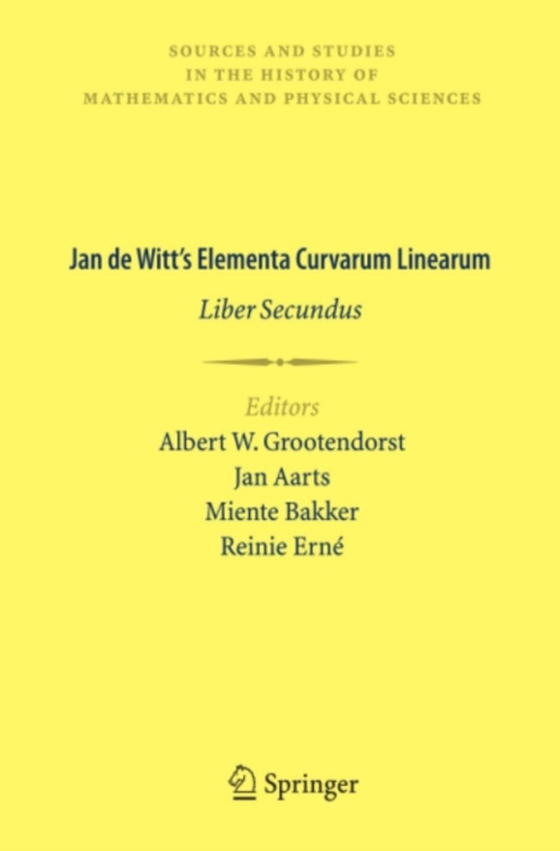
Jan de Witt's Elementa Curvarum Linearum e-bog
436,85 DKK
(inkl. moms 546,06 DKK)
- Following on from the 2000 edition of Jan De Witt's Elementa Curvarum Linearum, Liber Primus, this book provides the accompanying translation of the second volume of Elementa Curvarum Linearum (Foundations of Curved Lines). One of the first books to be published on Analytic Geometry, it was originally written in Latin by the Dutch statesman and mathematician Jan de Witt, soon after Descartes'...
E-bog
436,85 DKK
Forlag
Springer
Udgivet
30 september 2010
Genrer
PBM
Sprog
English
Format
pdf
Beskyttelse
LCP
ISBN
9780857291424
- Following on from the 2000 edition of Jan De Witt's Elementa Curvarum Linearum, Liber Primus, this book provides the accompanying translation of the second volume of Elementa Curvarum Linearum (Foundations of Curved Lines). One of the first books to be published on Analytic Geometry, it was originally written in Latin by the Dutch statesman and mathematician Jan de Witt, soon after Descartes' invention of the subject. - Born in 1625, Jan de Witt served with distinction as Grand Pensionary of Holland for much of his adult life. In mathematics, he is best known for his work in actuarial mathematics as well as extensive contributions to analytic geometry.- Elementa Curvarum Linearum, Liber Secondus moves forward from the construction of the familiar conic sections covered in the Liber Primus, with a discussion of problems connected with their classification; given an equation, it covers how one can recover the standard form, and additionally how one can find the equation's geometric properties. - This volume, begun by Albert Grootendorst (1924-2004) and completed after his death by Jan Aarts, Reinie Ern and Miente Bakker, is supplemented by:- annotation explaining finer points of the translation;- extensive commentary on the mathematicsThese features make the work of Jan de Witt broadly accessible to today's mathematicians.
 Dansk
Dansk

